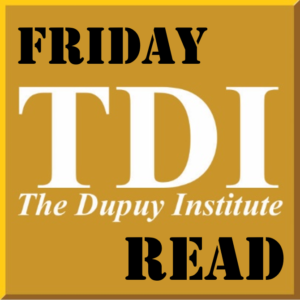 Today’s edition of TDI Friday Read is a roundup of posts by TDI President Christopher Lawrence exploring the details of tank combat between German and Soviet forces at the Battle of Kursk in 1943. The prevailing historical interpretation of Kursk is of the Soviets using their material and manpower superiority to blunt and then overwhelm the German offensive. This view is often buttressed by looking at the ratio of the numbers of tanks destroyed in combat. Chris takes a deeper look at the data, the differences in the ways “destroyed” tanks were counted and reported, and the differing philosophies between the German and Soviet armies regarding damaged tank recovery and repair. This yields a much more nuanced perspective on the character of tank combat at Kursk that does not necessarily align with the prevailing historical interpretations. Historians often discount detailed observational data on combat as irrelevant or too difficult to collect and interpret. We at TDI believe that with history, the devil is always in the details.
Today’s edition of TDI Friday Read is a roundup of posts by TDI President Christopher Lawrence exploring the details of tank combat between German and Soviet forces at the Battle of Kursk in 1943. The prevailing historical interpretation of Kursk is of the Soviets using their material and manpower superiority to blunt and then overwhelm the German offensive. This view is often buttressed by looking at the ratio of the numbers of tanks destroyed in combat. Chris takes a deeper look at the data, the differences in the ways “destroyed” tanks were counted and reported, and the differing philosophies between the German and Soviet armies regarding damaged tank recovery and repair. This yields a much more nuanced perspective on the character of tank combat at Kursk that does not necessarily align with the prevailing historical interpretations. Historians often discount detailed observational data on combat as irrelevant or too difficult to collect and interpret. We at TDI believe that with history, the devil is always in the details.

The Dupuy Institute
Excellence in Historical Research and Analysis

The Dupuy Institute
Excellence in Historical Research and Analysis